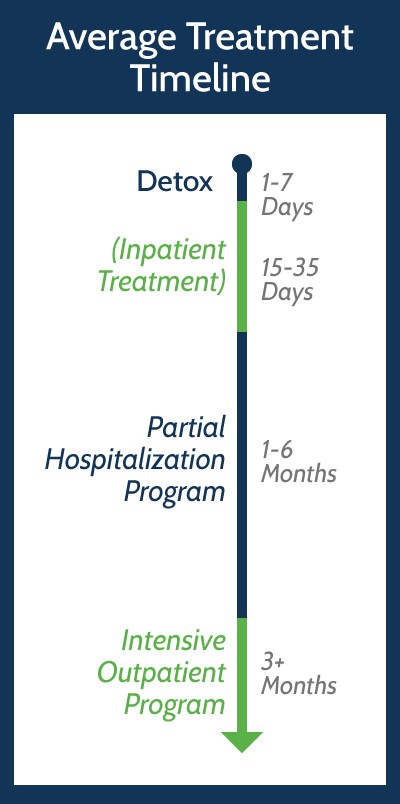The process of quitting drugs and alcohol is rarely easy. From a complete change in lifestyle to withdrawal and intense cravings, it’s clear why many addicts relapse a time or two before getting clean for good.
While most substance users are familiar with withdrawal, or the body’s response to losing a substance it has come to depend on, they understandably expect the withdrawal period to be a month or less. However, for chronic, long-term users, this may not be the case. Post-acute withdrawal syndrome, also known as PAWS, is a continuation of withdrawal symptoms after the physical element of addiction has concluded that can last weeks, months, or even years.
What Is Post-Acute Withdrawal Syndrome?
Post-acute withdrawal syndrome is a period of ongoing withdrawal symptoms that persist after the physical bonds of addiction have been broken. While side effects often vary from one drug to another – and one user to another, based on history of use – they are usually mood-related, creating long-term discomfort for those attempting recovery. PAWS doesn’t affect every recovering user, but the longer and heavier drug abuse was, the more likely it is to cause ongoing side effects.

Despite the presence of PAWS in long-term users, there is no scientific support for post-acute withdrawal syndrome and the true cause of related symptoms is unknown. Some doctors theorize that PAWS may be related to changes in the central nervous system that persist after detox, or perhaps disturbances in neurotransmitters and subsequent modifications to neural pathways. However, these are still just theories; no universally accepted circumstantial or physical source is known. Due to the lack of understanding of PAWS, there are also few studies monitoring its presence so its incidence rate is largely unknown as well.
Symptoms of PAWS
PAWS symptoms, while different for every drug, are primarily associated with mood and behavior. Most users suffering from PAWS can expect to feel some combination of the following effects:
- Aggression or hostility
- Anxiety and unusual stress
- Feeling of fear
- Irritability
- Insomnia
- Exhaustion
- Troubled thinking
- Compromised concentration
- An inability to feel pleasure
- Memory issues
For those in recovery seeking sobriety, PAWS can be a serious detriment. The mood swings, anxiety, insomnia, and other symptoms that accompany PAWS put recovering users at a significantly higher risk of relapse, as the ongoing nature of PAWS can drive heightened cravings.
How Long Does PAWS Last?
PAWS is an unpredictable condition. Outside of ongoing substance abuse, there is very little rhyme or reason for who is affected by PAWS and who is not. As such, there’s also little to indicate how long PAWS will last when symptoms begin.
Many users break through the primary physical bonds of addiction in the first three to seven days of treatment, depending on substance of choice. This period will be the worst physically, with ongoing mood changes and other symptoms persisting for one to two weeks. After this point, the body’s response to addiction is presumed to come to an end, leaving users to deal with the emotional and mental ramifications of abuse.
This period of relative calm lasts for one to two months, as recovering addicts begin to settle into sobriety and enjoy the clear-headedness and emotional stability that comes with staying sober. However, after this period, PAWS symptoms may commence, starting with heightened mood challenges, like increased anxiety, trouble sleeping, trouble concentrating, and memory issues.
For some recovering users, PAWS is not a steady state; it crests and falls, with users having good days and bad ones. Symptoms will often worsen every few weeks, making it very challenging to live normally in recovery.
After one to two years, PAWS symptoms begin to dissipate for good, with moods and emotions regulating to a pre-addiction state.

Addictive Substances and PAWS
Different addictive substances result in varying acute symptoms of withdrawal. While some drugs, like marijuana, result in insomnia and anxiety, others, like alcohol, put users at risk of seizures and delirium tremens. As such, it’s only natural that PAWS effects will vary from one substance to the next.
Opiates and Heroin
The effects of opiates on the brain are well-known; prolonged opiate use leads to the overstimulation of opioid receptors in the brain and thus the reduction of naturally-occurring neurotransmitters like dopamine. When opiate use stops, the body’s limited supplies of dopamine are inadequate, leading to a painful withdrawal process.
These same mechanisms play a role in PAWS; in these individuals, restoring the body’s natural neurotransmitter production may take longer than normal. This can lead to symptoms like fatigue, anxiety, apathy, and trouble sleeping.
Alcohol
Alcohol is extremely addictive, and suddenly stopping alcohol use can lead to extreme acute withdrawal symptoms, like seizures and psychosis. Much of this is due to the hyperactivity in the nervous system that occurs with alcohol cessation. PAW side effects follow a similar trend with symptoms relating to an overactive nervous system, including trouble sleeping, anxiety, mood swings, and lack of interest in sexual activity.
Tapering alcohol use can be of use in reducing the likelihood of PAWS in long-term users, helping to normalize the body’s responses throughout recovery.
Benzodiazepines
Similar to alcohol, benzodiazepines can throw the body into a hyperexcitable state upon stopping long-term use. For this reason, breaking a benzo addiction can be very challenging, and the acute withdrawal associated with cessation can be very uncomfortable. Due to the effects on the body, PAWS symptoms after benzodiazepine addiction can be severe as well, with those in recovery experiencing depression, extreme anxiety, erratic behavior, and fear.
Despite the similarities to alcohol in the body’s response to benzos, tapering is not an effective strategy in preventing PAWS.
Antidepressants
Antidepressants play a strong role in brain chemistry, helping to normalize pathways in the brain to combat feelings of deep sadness, hopelessness, and anxiety. While infrequently abused, antidepressants can still be very troubling to stop due to these changes.
PAWS is uncommon after stopping antidepressant use under a doctor’s orders, but is still a possibility, especially for those who choose to quit alone. Those with PAWS experience anxiety, depression, and trouble sleeping.
Marijuana
While marijuana is rarely physically addictive, long-term users do still experience withdrawal when quitting. As many people take marijuana for its calming effects, stopping use can lead to anxiety, stress, and paranoia. Insomnia is common with cessation of use, and, when left untreated, can lead to long-term sleep disturbance.
PAWS Risk Factors
While the true cause behind PAWS and who it affects is largely unknown, addiction medicine professionals have been able to isolate several risk factors that increase a recovering user’s likelihood of suffering from symptoms of PAWS.
- History of drug abuse; those with years of chronic use are at higher risk for PAWS
- Intensity of use
- Genetics
- Physiology
- Psychological factors, like co-occurring disorders
- Improper rehabilitation

Quitting drugs or alcohol without oversight and professional interference has shown to be a prominent factor in PAWS. Without proper education, treatment of initial acute withdrawal symptoms, and psychotherapeutic counseling to provide coping techniques and craving management, it’s much more likely recovering addicts will experience months or even years of residual effects.
Preventing PAWS
As there’s no singular known cause for PAWS, prevention isn’t always possible. However, an understanding of this condition and a proper approach to recovery can make it easier to withstand post-acute withdrawal syndrome, minimizing likelihood of relapse.
- Education: as in many aspects of recovery, education is highly important. With a comprehensive understanding of the world to come, including what signs to watch for, those in recovery can be prepared for what may lie ahead.
- Mindfulness and a Positive Attitude: Mindfulness can be an important part of recovery, and this includes combatting PAWS. Being aware of successes and abilities outside of addiction can help patients to stay committed to what matters most – recovery.
- Physical Activity: Exercising while in withdrawal may not sound pleasant, but it can be an important way to improve your immune system, boost endorphins, and help you feel your best.
- Intervention when necessary: While prescription medication is generally not encouraged for PAWS, minor intervention, like the use of natural sleep aids to help insomnia, can help those in recovery to mitigate symptoms as best as possible.
At Level Up Treatment, we are prepared to offer guidance throughout recovery, including acute withdrawal and post-acute withdrawal syndrome. Our staff is extremely knowledgeable about the road to sobriety, and can arm you with the tools and techniques you need to stand strong against cravings and temptation.
If you or someone you love is facing addiction, we are here to help. Please contact Level Up Treatment to learn more about how you can overcome addiction, pursue sobriety, and prepare for the world after rehab. Call today for a confidential consultation.